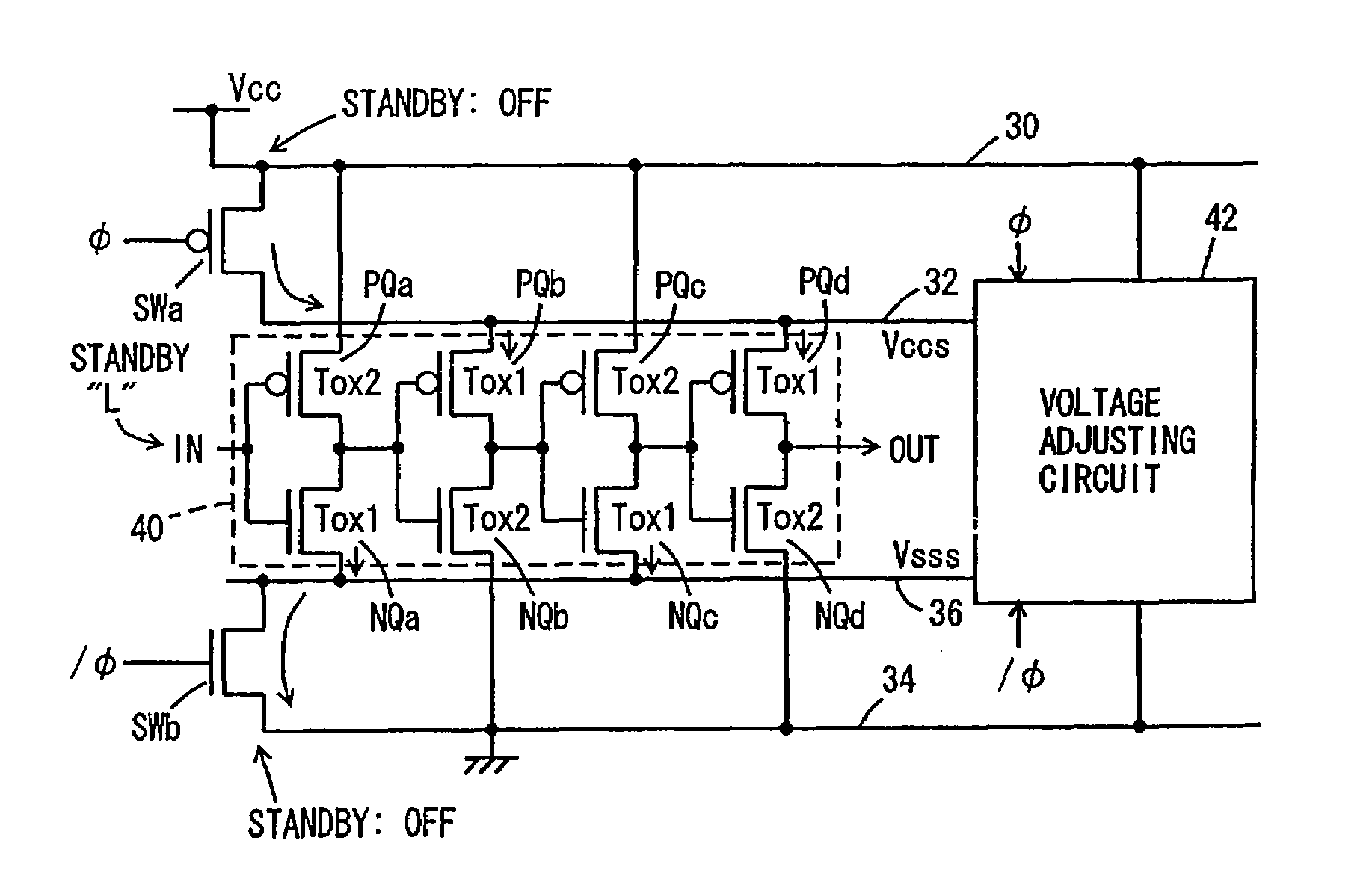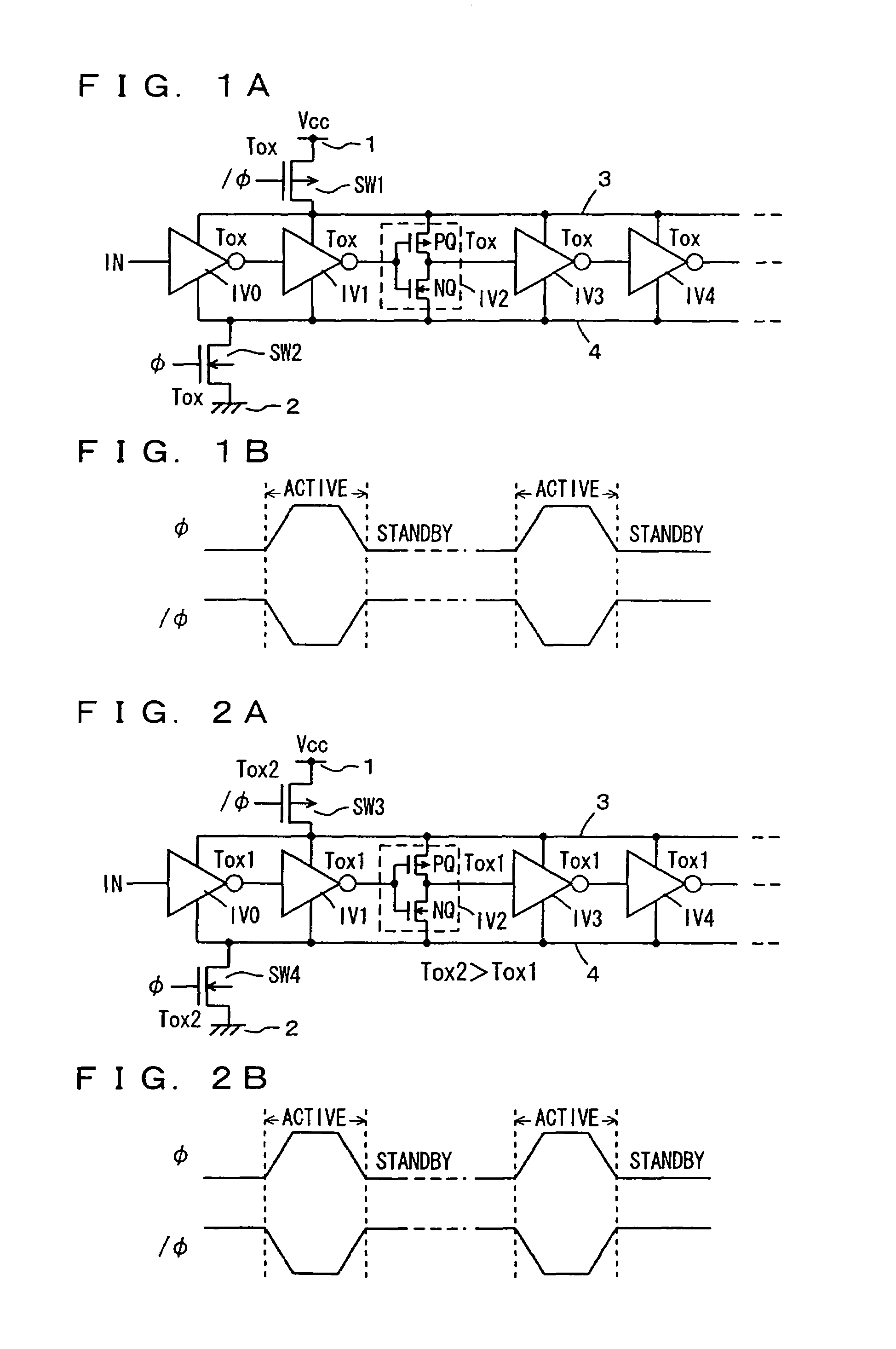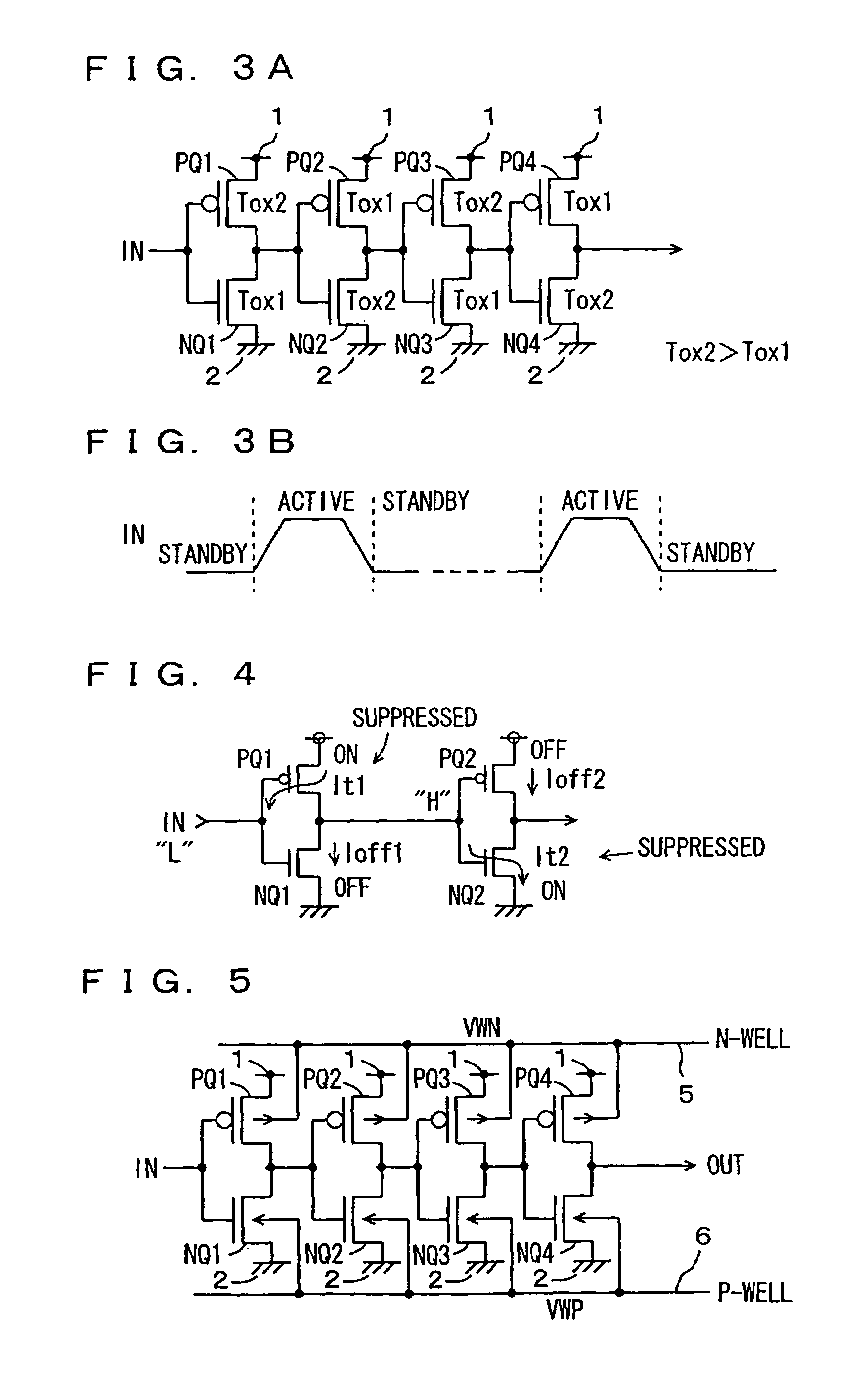Semiconductor integrated circuit device operating with low power consumption
a technology of integrated circuit device and low power consumption, which is applied in the direction of logic circuit coupling/interface arrangement, pulse technique, instruments, etc., can solve the problems of inability to achieve the reduction of operation power supply voltage, difficulty in reducing the absolute value of threshold voltage, and increase of leakage current, etc., to achieve high integration and suppress current consumption
- Summary
- Abstract
- Description
- Claims
- Application Information
AI Technical Summary
Benefits of technology
Problems solved by technology
Method used
Image
Examples
first embodiment
[0156]FIG. 1A schematically shows a structure of a semiconductor device according to a first embodiment of the present invention. Referring to FIG. 1A, the semiconductor device includes cascaded CMOS inverter circuits IV0-IV4. Each of CMOS inverter circuits IV0-IV4 includes a P-channel MIS transistor PQ and an N-channel MIS transistor NQ as its components. Each of MIS transistors PQ and NQ has a gate insulating film having a sufficiently reduced thickness Tox that provides a gate tunnel barrier similar to or lower than a gate tunnel barrier provided, e.g., by a silicon oxide film of 3 nm in thickness. The previous formula of the gate tunnel current J includes the gate insulating film thickness Tox and the barrier height φ as parameters, and therefore, the “gate tunnel barrier” is defined here and hereinafter as being given by a product of thickness Tox of the gate insulating film and a square root of barrier height φ. The barrier height φ is expressed by a difference between a Fermi...
second embodiment
[0171]FIG. 3A schematically shows a structure of a semiconductor device according to a second embodiment of the present invention. In FIG. 3, four CMOS inverter circuits are cascaded. These CMOS inverter circuits are directly coupled to power supply node 1 and ground node 2. More specifically, each of P-channel MIS transistors PQ1-PQ4 has a source coupled to power supply node 1, and each of N-channel MIS transistors NQ1-NQ4 has a source coupled to ground node 2.
[0172]Input signal IN is held at L-level in the standby state and is driven to H-level in the active cycle, as shown in FIG. 3B. In accordance with the logical level of input signal IN in the standby cycle, the thickness of the gate insulating film is set to the large value, the thickness Tox2 in each of MIS transistors PQ1, PQ3, NQ2 and NQ4, which are on in the standby state. In MIS transistors NQ1, PQ2, NQ3 and PQ4 which are off in the standby cycle, the thickness of each gate insulating film is set to the thickness, Tox1. ...
third embodiment
[0176]FIG. 5 shows a structure of a semiconductor device according to a third embodiment of the present invention. In FIG. 5, four CMOS inverter circuits are arranged. Back gates of P-channel MIS transistors PQ1-PQ4 of these CMOS inverter circuits are commonly connected to an N-well 5, and sources thereof are commonly connected to power supply node 1. Each of N-channel MIS transistors NQ1-NQ4 has a source connected to ground node 2 and a back gate coupled to a P-well 6. A well voltage VWN on N-well 5 and a well voltage VWP on P-well 6 change with the operation cycle.
[0177]FIG. 6 is a signal waveform diagram representing an operation of the semiconductor device shown in FIG. 5. In the standby state, as shown in FIG. 6, the voltage VWN applied to N-well 5 is set to a high voltage Vpp level, and the voltage VWP applied to P-well 6 is set to a negative voltage VBB level. In the active cycle, the voltage VWN applied to N-well 5 is at power supply voltage VCC level, and the voltage VWP ap...
PUM
 Login to View More
Login to View More Abstract
Description
Claims
Application Information
 Login to View More
Login to View More - R&D
- Intellectual Property
- Life Sciences
- Materials
- Tech Scout
- Unparalleled Data Quality
- Higher Quality Content
- 60% Fewer Hallucinations
Browse by: Latest US Patents, China's latest patents, Technical Efficacy Thesaurus, Application Domain, Technology Topic, Popular Technical Reports.
© 2025 PatSnap. All rights reserved.Legal|Privacy policy|Modern Slavery Act Transparency Statement|Sitemap|About US| Contact US: help@patsnap.com



